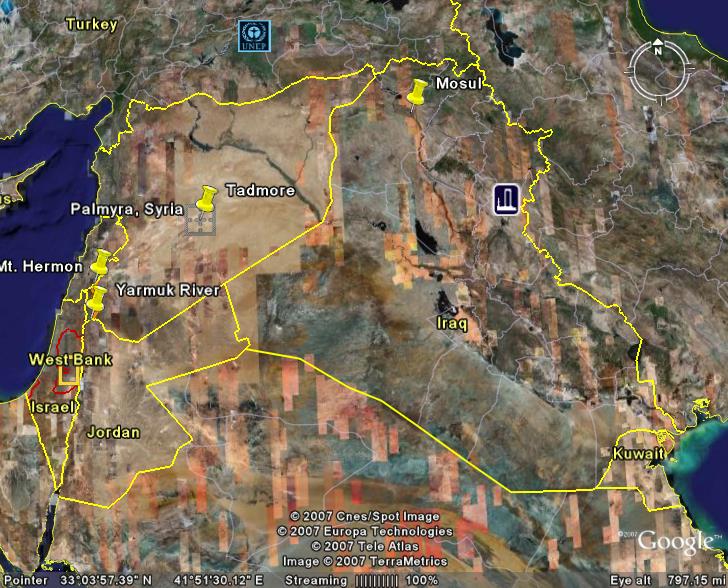Tadmore
|
Currently
known as Palmyra,
Tadmore is a oasis in the middle of Syria. Its strategic position
in the Syrian desert, midway between Mosul and the Mediterranean made
it a coveted location for the British. After having received
oil-rich Mosul as a concession from the French, the British requested
Tadmore as well, stating that they needed a "line" through Syria,
including this oasis, to make travel and
transport between Mosul and the Mediterranean realistic. The
French, who had already made significant alterations to the Sykes-Picot
Agreement without compensation, refused to give Tadmore to the
British. Click here
to see
a map of the debate over the location of the proposed "line". (Hughes,
1999, 121, 137, 143-46). |
Mosul
|
According
to the terms of the
Sykes-Picot Agreement Mosul, a city in northern Iraq, was well inside
of the area of French influence. However, after oil was
discovered in Mosul the British were loath to leave it in French
control. In December of 1918 British Prime Minister Lloyd George
negotiated with French Premier Clemenceau to transfer control of Mosul
from the French to the British. For more on the British
justification for altering the Anglo-French areas of influence click here.
Oil had become
increasingly important to Great Britain as the British navy
transitioned to the use of oil to power its ships. Therefore
control over Mosul, and consequently the oil there, became an important
British military aim. Click here
to
view maps showing the change of the French area of influence after the
French concession of Mosul to the British. (Hughes, 1999, 120-22). |
Mt.
Hermon
|
Mt.
Hermon became a sticking
point in Anglo-French negotiations in 1918 when the British claimed
that the northern border of Palestine needed to be enlarged to include
the springs by Mt. Hermon and all of Galilee if Palestine was to have a
viable economy
based on agriculture. The French never agreed to give up Mt.
Hermon, but they did agree to share some of the power generated from
the springs. The final border of Palestine, established by the
San Remo Conference in 1920, pushed Palestine's northern boarder up
from the previous location specified in the Sykes-Picot Agreement but
not all the way to Mt. Hermon. (Hughes, 1999, 140). |
Yarmuk
River
|
The terms of the Sykes-Picot
Agreement gave France influence over all of Syria, including the Yarmuk
river valley and placed Mesopotamia (modern Iraq) under British
control. However, the British soon realized that a land corridor
connecting Mesopotamia to Palestine and Egypt would be of great
strategic worth. This land strip would provide a route for oil
pipelines to transport oil from Mosul to the Mediterranean Sea and
would allow British air and land military to move between the British
holdings in the Middle East. The British were optimistic about
the likelihood of gaining French approval of this plan, but the French
maintained that the territorial concessions of the Sykes-Picot
agreement were valid and so would not acquiesce to British desires.
(Hughes,
1999, 132-35). |
